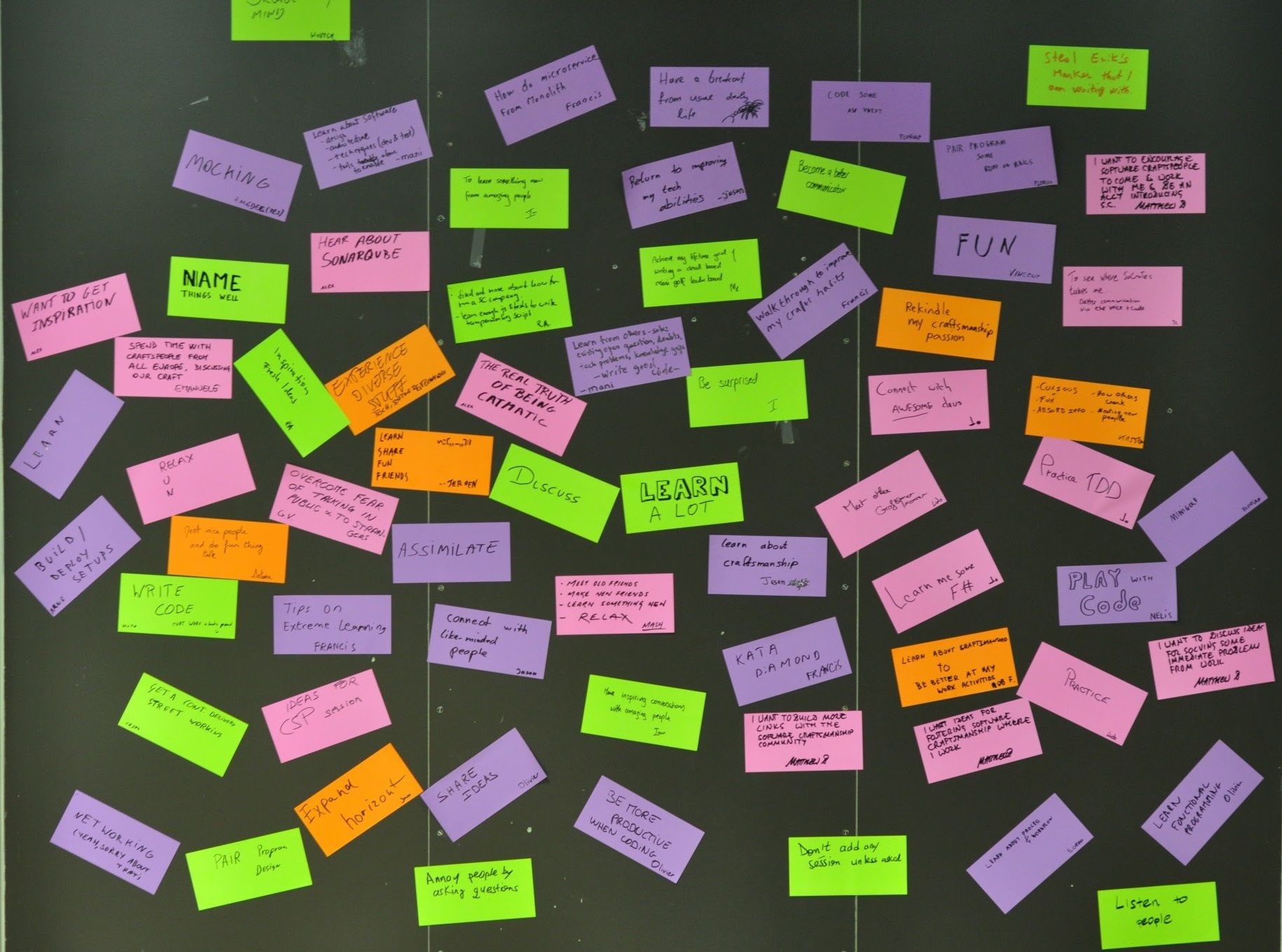Over a year and a half ago, my friend Erik invited me to SoCraTes UK, an international software craftsmanship retreat, where I discovered the concept of an open space. I fell in love with the format, so much so that shortly after our return we changed our own software craftsmanship monthly meetup to the open space format as well. Later that year we also organized SoCraTes BE, which is basically two full days of open space. Needless to say, we really like open spaces.
Despite my enthusiasm about open spaces - or perhaps exactly because of it - I have often found myself struggling to explain what an open space is to people unfamiliar with the concept. Open spaces can mean so many different things to different people, at different times in their career. It's easy to get carried away with 'Why you should totally come to our next open space' instead of explaining what it is, causing confusion instead of excitement for the format.
For someone facilitating open spaces, it's rather disappointing to be unable to spread my love for open spaces, so I set about trying to come up with a clear and concise description of what an open space is.
A two minute introduction
An open space is a way to facilitate collaboration between individuals around a central theme through self-organization, in a way that maximizes each individual's learning.
Everyone is encouraged to write down, on a post-it, whatever topics he is interested, curious or passionate about. After a few minutes, everyone queues up and gets a chance to present one of their topics, place it on an empty time slot on the market place, and re-queue if they have more topics. After everyone has presented their topics, you get one minute to move your post-its to another empty spot on the market place, or negotiate with someone else about moving theirs.
The open space is guided by four principles:
It starts when it starts.
Whoever comes are the right people.
Whatever happens is the only thing that could have happened.
When it's over, it's over.
While there is some structure provided by the market place, the time slots and rooms available are only there as a guideline, and are not a binding law. It often happens that people break out of a session to form their own session in an another room, or sessions form organically over some drinks in the lounge.
In fact, the only law that applies to the open space is The Law of 2 Feet. This law states that whenever you feel you're either not contributing or learning anymore during a session, you use your two feet and leave for another session. Session hosts know they should not feel offended if you leave, and I know of no one who ever has been offended by this.
For newcomers, I encourage you to try out this law at the first opportunity.
The above description should give me a simple enough approach to explaining the open space format. The description goes from general to more specific, so depending on time and audience I'm able to trim the explanation without making it inconsistent. Even the first sentence alone could do when I'm under a lot of time pressure.
Feel free to use this explanation if you want. I did not invent these sentences, and I owe a lot to other facilitators before me like Erik and Rachel, as well as the various guides on the internet.
If I got you at least a bit interested in joining an open space once, check out our monthly open space or join us at our annual SoCraTes BE unconference.
